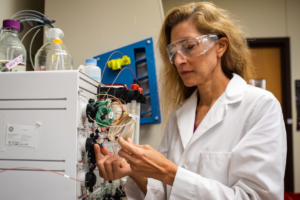What: Researchers from The University of Texas at Austin and Google will participate in a NASA media teleconference to announce their discovery involving the planet-hunting Kepler space telescope. The researchers used machine learning, an approach to artificial intelligence. This discovery demonstrates new ways of analyzing Kepler data and has implications for future space missions.
Who: The briefing participants are:
Andrew Vanderburg, UT Austin astronomer and NASA Sagan fellow
Christopher Shallue, senior software engineer at Google AI in Mountain View, California
Paul Hertz, Astrophysics Division director at NASA Headquarters in Washington, D.C.
Jessie Dotson, Kepler project scientist at NASA’s Ames Research Center in Mountain View, California
When: Thursday, Dec. 14, Noon CST
Where: For dial-in information, media must send their names, affiliations and phone numbers to Felicia Chou at felicia.chou@nasa.gov no later than 11 a.m. CST on Dec. 14. Questions can be submitted on Twitter during the teleconference using the hashtag #askNASA.
Teleconference audio and visuals will stream live at: https://www.nasa.gov/live.
Background: When Kepler launched in March 2009, scientists didn’t know how common planets were beyond our solar system. Thanks to Kepler’s treasure trove of discoveries, astronomers now believe there may be at least one planet orbiting every star in the sky.
The University of Texas at Austin and its McDonald Observatory have a long history with NASA’s Kepler mission. UT Austin astronomers have been involved with the mission since before launch and since then have verified a significant fraction of Kepler-detected possible planets using McDonald Observatory telescopes. This latest announcement heralds a new type of collaboration between UT Austin and Kepler.




